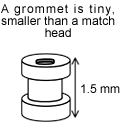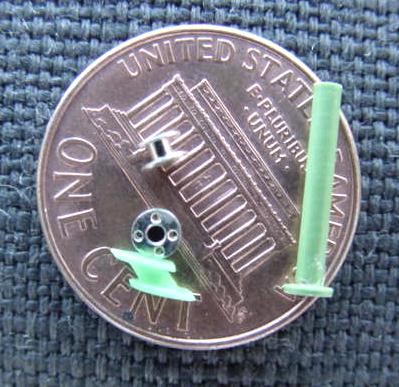Tympanostomy tube

A Tympanostomy tube (also known as a grommet") is a small tube inserted into the eardrum in order to keep the middle ear aerated for a prolonged period of time, and to prevent the accumulation of mucus in the middle ear. The operation to insert the tube involves a myringotomy. The tube itself is made in a variety of designs. The most commonly used type is shaped like a grommet. When it is necessary to keep the middle ear ventilated for a very long period, a "T"-shaped tube may be used. Materials used to construct the tube are most often plastics such as silicone or Teflon. Stainless steel tubes exist, but are no longer in frequent use.

Although myringotomy with tube insertion can be performed under local anesthesia during a regular doctor's appointment in co-operative adults, patients requiring tube insertion are very often young children. Since damage to the ear is possible unless the patient stays quite still while being manipulated, for any patient who may have difficulty laying still during the procedure, myringotomy and tube insertion is performed under a brief general anesthesia.
The insertion of tympanostomy tubes is one of the most common surgical procedures performed on children. In the USA, it is the most common reason for a child to undergo a general anaesthetic (Vaile L. Williamson T. Waddell A. Taylor G. Interventions for ear discharge associated with grommets (ventilation tubes).
Tympanostomy tubes generally remain in the eardrum for some period of time, ranging from several months to several years, before spontaneously falling out of the eardrum. The eardrum usually (but not always) closes without a residual hole at the tube site. Occasionally tubes remain in the eardrum longer than expected and must be removed by the surgeon.
See also